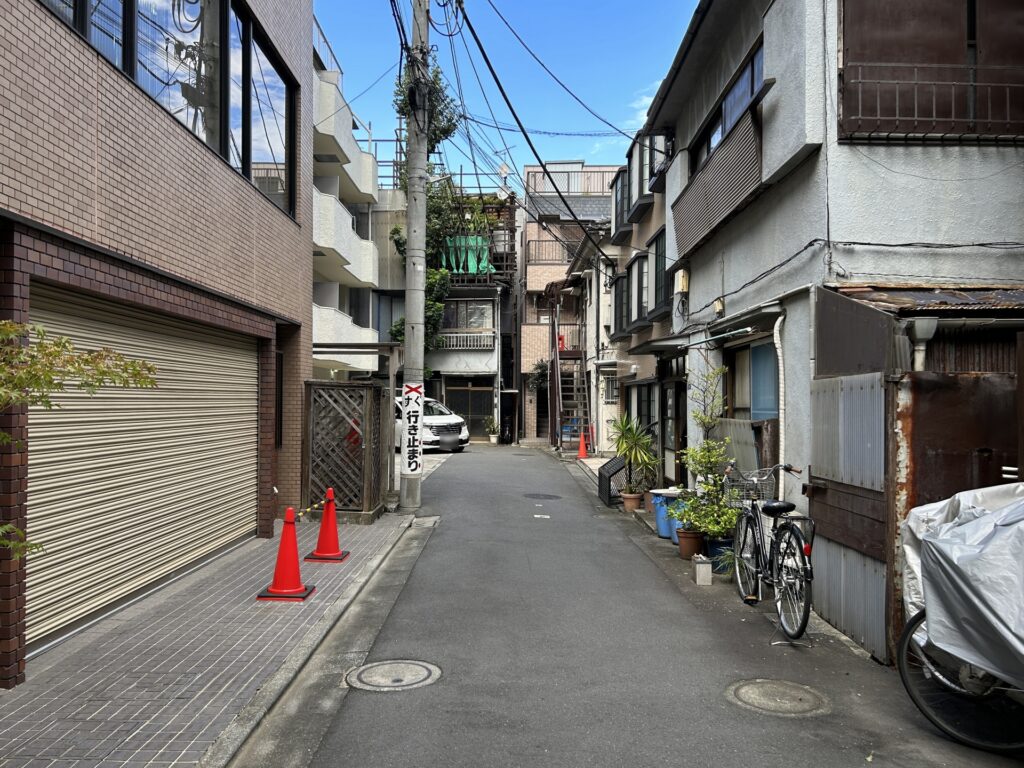Introduction: Japan’s Unique Mobility Needs Hidden in Plain Sight
Global automotive trends are racing ahead—electrification, autonomous driving, connected cars. Japan is keeping up technically, but if you glance at the country’s best-selling vehicles, something seems… off. Among all this cutting-edge progress, why are Japan’s streets dominated by boxy, ultra-compact vehicles called “kei cars”?
In 2024, the Honda N-BOX, Suzuki Spacia, and Daihatsu Tanto topped the charts. These aren’t just fringe cases—they are the mainstream. For outsiders, this feels paradoxical. Why would one of the world’s most advanced economies embrace cars that look more like oversized toasters than futuristic machines?
The answer lies not in technology alone but in environment, policy, and lifestyle. Kei cars are a UX success story—vehicles shaped by real-life constraints, local habits, and design that adapts rather than overwhelms. This article unpacks how kei cars thrive by delivering exceptional value within the context of everyday Japanese life.
What Are Kei Cars? — Engineering a Vehicle for the Local Reality
Kei cars are a legal category of microcars unique to Japan. By regulation, they must be no longer than 3.4 meters, no wider than 1.48 meters, and have engines under 660cc. You can spot them by their iconic yellow license plates.
But kei cars are more than just small. Their classification comes with benefits that make them incredibly attractive:
- Lower automobile taxes
- Cheaper mandatory inspections
- Reduced insurance premiums
- Highway toll discounts (with ETC devices)
For cost-conscious drivers, second-car owners, or families living in densely packed neighborhoods, these incentives make kei cars an obvious choice. But it’s not just about cost—it’s also about fit. In many Japanese cities, especially older neighborhoods, streets are narrower than four meters. Mechanical parking systems and monthly lots often impose strict size limits, leaving larger cars out of the equation entirely. In these environments, a kei car isn’t just convenient—it’s often the only vehicle that can actually get in, park, and turn around.
Daily life adds to this equation. Short-distance trips to preschools, grocery stores, or clinics are far more common than long drives, making maneuverability and fuel efficiency much more valuable than high-speed performance.
In short, kei cars represent a user experience shaped by both policy and physical environment—a category of vehicle born from constraint, but thriving through thoughtful, context-aware design.

Comparison of Kei Cars and Global Vehicle Segments
| Vehicle Class | Length (mm) | Width (mm) | Engine Displacement (cc) | Typical Use Cases & Features | Example Models |
| Kei Car (Japan) | Max 3,400 | Max 1,480 | Max 660 (by regulation) | Daily-use vehicle suited for both cities and suburbs; cost-effective | Honda N-BOX, Suzuki Spacia, Daihatsu Tanto |
| A Segment | Approx. 3,600–3,900 | Approx. 1,500–1,600 | Approx. 800–1,200 | Ultra-compact urban vehicles; suitable for young drivers or single-person households | Fiat 500, VW up!, Toyota Aygo |
| B Segment | Approx. 3,900–4,100 | Approx. 1,650–1,750 | Approx. 1,200–1,600 | Versatile compact cars for commuting and shopping | Toyota Yaris, VW Polo, Renault Clio |
| C Segment | Approx. 4,300–4,600 | Approx. 1,750–1,800 | Approx. 1,500–2,000 | Family cars suitable for long-distance driving | Toyota Corolla, VW Golf, Honda Civic |
Why Were Kei Cars Created, and Why Do They Keep Evolving?
Kei cars trace back to postwar Japan. In the 1950s, the government pushed the “National Car Concept”—an initiative to motorize the nation with small, affordable, efficient vehicles. Kei cars were designed to democratize mobility. Over time, their role evolved. Initially workhorses for rural transport or delivery, kei cars gained popularity in cities during the ’90s as parking and tax incentives became increasingly appealing.
Then came a design revolution. The 2000s introduced the “tall kei wagon”—cars like the Daihatsu Tanto and Honda N-BOX. These combined compact footprints with surprisingly roomy interiors, making them viable family cars.
Across decades, kei cars have continually evolved in step with shifts in Japanese society and everyday life. What began as a symbol of postwar accessibility has transformed into a modern mobility solution—tailored to urban living, changing demographics, and the nuanced needs of contemporary users.
UX Evolution Timeline:
- 1950s–70s: Freedom of ownership; simplicity and affordability
- 1980s–90s: Practicality for everyday users, especially women and seniors
- 2000s: Compact family vehicles with high roofs and smart interiors
- 2010s–Now: Premium design, emotional appeal, and brand storytelling )
Representative Models That Reflect the Evolution of Kei Cars
| Era | Model Name (Manufacturer) | Launch Year | Key Features & Significance |
| 1950s | Subaru 360 (Fuji Heavy Industries) | 1958 | Japan’s first “national car.” Lightweight, affordable, and fuel-efficient, it made private car ownership accessible. Nicknamed the “ladybug.” |
| 1970s | Honda N360 / Life | From 1967 | Prioritized usability as a daily vehicle. Front-wheel drive improved interior space and handling. |
| 1980s | Suzuki Alto | 1979 | Marketed as the “470,000-yen car,” it became hugely popular, especially among female users. Played a key role in personalizing kei cars. |
| 1990s | Daihatsu Move | 1995 | A pioneer of the tall kei wagon. Its high roof and practical interior made it a favorite for families. |
| 2000s | Suzuki Wagon R | From 1993 | A long-time bestseller. Established kei cars as “proper” vehicles with reliability and cost-effectiveness. |
| 2010s–Present | Honda N-BOX | From 2011 | A super-tall kei wagon that combines safety, spaciousness, convenience, and design. Ranked No.1 in overall vehicle sales in Japan. |
UX Insights: Why Kei Cars Just Work
1. Built for the Infrastructure
More than 40% of residential streets in Japan are under 4 meters wide. Owning a car here isn’t about horsepower—it’s about threading through alleys, squeezing into parking lifts, and navigating dense cityscapes.
Kei cars turn these constraints into design parameters. They’re cheap to own, easy to park, and provide peace of mind in tight spaces. This is UX at its best: aligning product design with the user’s environment.
2. Serving a Spectrum of Lifestyles
Kei cars cater to a wide range of users:
- Parents appreciate sliding doors and low floors for easy kid access.
- Seniors benefit from higher seating positions and tight turning radii.
- Singles save on fuel and parking without sacrificing convenience.
Rather than optimizing for performance on paper, kei car makers optimize for real life. The result? Vehicles that adapt to diverse needs, from rural commutes to urban errands.
3. Emotional UX and Brand Value
Today’s kei cars aren’t just practical. They’re stylish, comforting, and expressive. Soft colors, minimalist interiors, and ambient lighting foster a sense of calm and control.
Manufacturers have even created sub-brands to distinguish their kei lines. Honda’s “N Series” is a prime example—a family of compact vehicles with a cohesive design identity and emotional appeal. Kei cars now offer delight, not just utility.
Design Lessons from Kei Cars: Constraint Is the New Opportunity
What makes kei cars remarkable isn’t cutting-edge tech or luxury features. It’s their radical fit to Japan’s unique environment—its streets, homes, regulations, and rhythms of daily life. They succeed by solving real problems rooted in local context. This is UX design at its most honest: less about adding more, and more about removing friction. Kei cars don’t start from specs—they start from how people actually live, and build around those realities.
For global automakers and designers, this approach offers a powerful lesson. Designing for true usability means immersing in the physical and cultural context of your users. It’s not about exporting universal solutions, but about creating innovations that emerge from specific needs.
Want to Explore Automotive UX in Japan or Beyond?
At Uism, we support automotive UX research for both domestic and global clients. From in-depth ethnographies to usability evaluations, we help uncover how people actually live with mobility. If you’re exploring user-centered vehicle design, we’d love to connect.
Related Article:
References:



